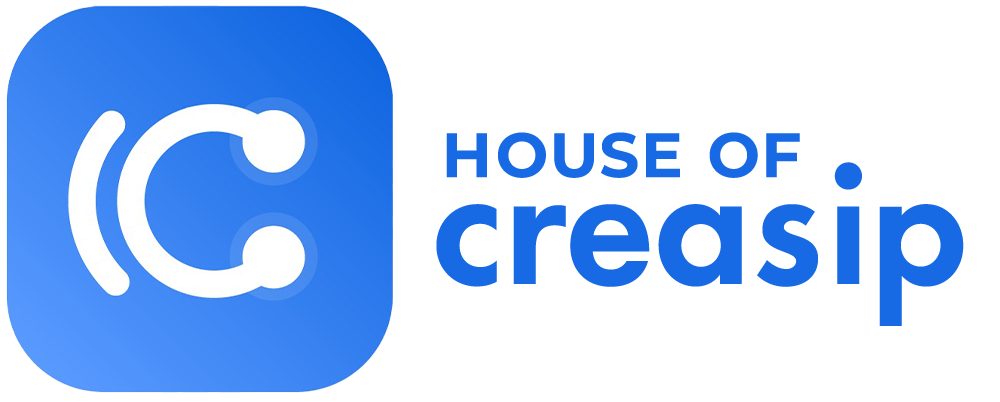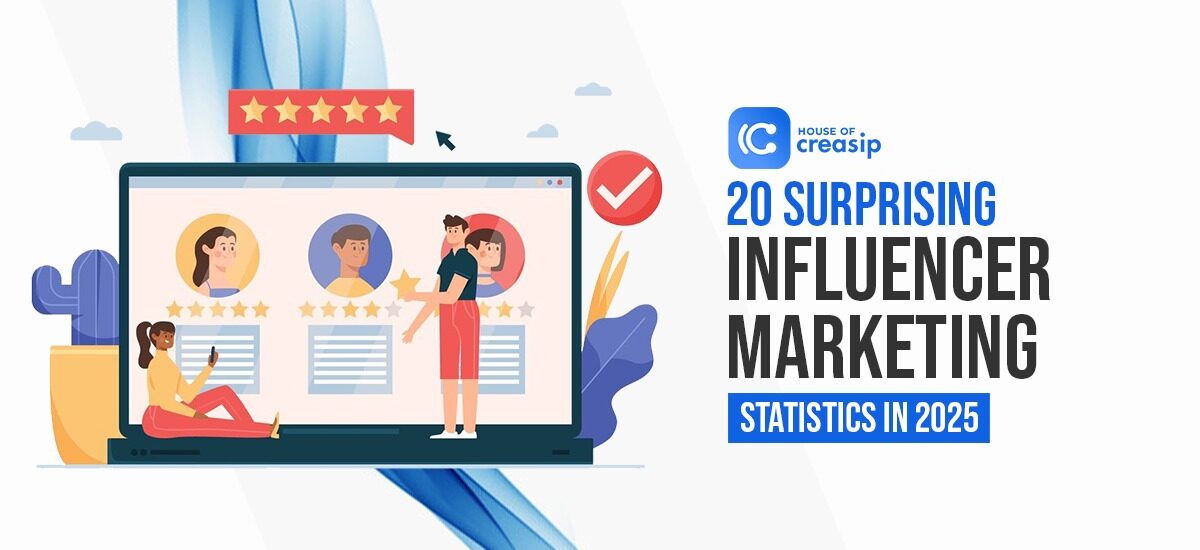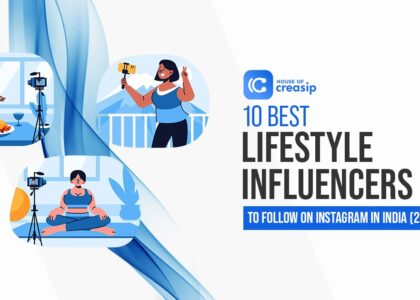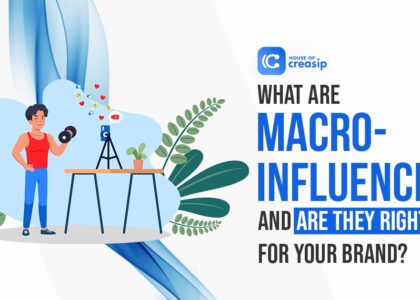20 Surprising Influencer Marketing Statistics in 2025
In this day and age, influencers have entirely changed the way brands engage with consumers. Ad budgets for TV commercials and billboards no longer dictate consumer buying choices. In 2025, a single social media influencer’s post can spark trends, drive sales of products like Labubu in record time, and alter the way consumers perceive brands.
On the other side of the hype, influencer marketing statistics in 2025 reveal fascinating stories of undeniable truths that all companies, marketers and brands should know to drive more growth.
Whether you are new to influencer marketing, seeking to understand the types of influencer marketing you may need, or wanting to grasp how influencers impact marketing, these 20 new influencer marketing statistics will reveal the power of influencer marketing.
As India’s largest influencer marketing agency, House of Creasip has compiled influencer marketing statistics for 2025 for you. Below are the 20 Surprising Influencer marketing statistics that are likely to change your views on becoming involved in digital campaigns.
1. Influencer Marketing is Expected to Exceed $32.5 Billion By 2026
The influencer marketing industry in India is expected to exceed $32.5 billion by 2026. Brands are redirecting their budgets to social media influencers from traditional advertisements because they are held in higher trust by consumers and are perceived as more credible than traditional advertisements. As micro and nano influencers are in high demand for producing authentic content and achieving higher engagement levels, brands are increasingly focusing on building trust, enhancing brand awareness, and improving consumer trust.
2. 63% of Consumers Trust Social Media Influencers More Than Traditional Advertising
Currently, 63% of Indian consumers feel that social media influencers are significantly more trustworthy than traditional advertisements. Influencers provide more relatable content to the viewers than scripted celebrity endorsements. Brands that invest time in engaging with and utilising Instagram influencer marketing in India tend to experience higher engagement and improved conversions compared to those opting for traditional advertising. In addition, influencers can change audience perceptions, create brand trust, and influence consumers’ buying decisions. Influencers are a major player to look out for in digital brand marketing strategies today.
3. 80% of Gen Z Buy After Seeing Influencer Recommendations
In 2025, 80% of Gen Z in India make purchases after viewing recommendations from influencers. The new generations are more drawn to authentic recommendations, reviews, and tutorial-style content over traditional television advertisements. Relatable influencers that represent your brand will positively increase your brand’s engagement, conversions and brand loyalty. Influencer marketing is an essential online marketing strategy for a younger audience nowadays, especially in fashion, beauty, lifestyle, and tech. Influencer marketing has proven measurable results for brands.
4. 52% of Brands Prioritised Short Videos in Influencer Campaigns
Short videos are dominating the Indian influencer marketing space, with over 52% of brands focusing on short-form videos, including Instagram Reels, YouTube Shorts, and others. Influencers are relatable to audiences and build trust and excitement in just a few seconds. Each shareable and interactive piece of content created by influencers increases reach and conversions. In India, Fashion, FMCG, e-commerce and tech brands are using short-form videos with creative storytelling for effective influencer campaigns.
5. 67% of Brands Used Instagram Stories as a Deliverable for Influencer Ads
67% of brands have used Instagram Stories within the scope of their influencer marketing campaigns in India. Most brands used features in stories like polls, swipe-up links and countdowns to create engagement of the audience on their social pages while maintaining authenticity in their content. Unlike standard advertising, influencer posts show products in a more natural way, which can help to raise trust in a brand. Stories are crucial for fashion, beauty, lifestyle, and e-commerce brands to build visibility, click-through rates, and conversions.
6. 66% of Marketers Similarly See Better Campaigns Using AI Tools
AI is reshaping influencer marketing in India, especially influencer discovery, audience insights, and performance tracking. 66% of marketers agree they achieve better outcomes from campaigns using AI. Beyond that, 73% expect automation to implement manual work such as predicting ROIs and recognising fake followers. This is leading to clearer influencer selections, optimising content strategies and measurable success across digital campaigns in various sectors.
7. Influencers Affiliate Revenue is Increasing at a 71% Year-by-Year
Affiliate campaigns are increasingly becoming bigger in India, with total influencer revenue increasing at a 71% year-over-year rate. Influencer affiliate marketing allows creators to achieve measurable sales while simultaneously developing brand awareness. Brands that incorporate affiliate codes, shoppable links, and promotions can track and measure their ROIs directly. Performance-driven campaigns further augment traditional influencer approaches, allowing for increased engagement, visibility, and revenue, particularly for D2C, fashion, lifestyle, and skincare brands targeting Gen Z or Millennials.
8. Virtual Influencers are Popular in 2025
AI-generated virtual influencers are hot in India right now, providing brands with cost-effective and scalable influencer marketing campaign options. Digital creators allow brands to experiment with creativity they would otherwise never consider, but, at the same time, keep a firm hand on brand control. Despite this trend, audiences are still attracted to human influencers for their authenticity. Virtual influencers enhance traditional marketing and marketing strategies, resulting in increased engagement and reach of digital influencers across different industries such as fashion, beauty, gaming and lifestyle.
9. 80% of Brands Increased Their Influencer Marketing Budgets in 2025
In 2025, 80% of brands in India maintained the same or increased their influencer marketing budgets, and almost half of these brands even increased theirs by 11% or more. These brands are investing in micro, nano and macro influencers to develop awareness, engagement, and convert sales with influencers. This increase in spending reflects positive sentiments toward results (ROI) and shows that brands have faith in influencer marketing strategies as part of their entire marketing process. Influencer marketing is centre stage in marketing strategy and find its way into modern advertising brands across industries, including FMGC (Fast Moving Consumer Goods), Fashion, and Tech industries.
10. Instagram is Still the Major Player in Influencer Marketing
Instagram continues to dominate influencer marketing in India, with over half (57%) of brands using Instagram Reels, Stories and Shoppable posts in influencer campaigns. Even with the emergence of other platforms like TikTok and YouTube, Instagram continues to be the best platform for engagement and conversions. Influencers in fashion, lifestyle, beauty, and tech niches are successfully utilising Instagram as their primary platform, helping brands to reach Gen Z, millennials, and urban consumers while building brand awareness and driving sales.
11. Fashion is the Most Important Niche on Instagram
As we reach 2025, fashion is ruling Instagram influencer marketing in India as over 38% of influencers create content about fashion. Whether it is ethnic wear for the festivals or trendy streetwear, fashion is driving brand collaborations and consumer engagement. Fashion influencer content is one of the leading influencers of purchase decisions for Gen Z and millennials too. Brands in clothing, accessories, cosmetics, and lifestyle can benefit most from influencer campaigns run by trusted fashion influencers.
12. Demand for Influencers Skyrockets Around Festival Time
Festivals in India, like Diwali, Holi, Eid, Raksha Bandhan, etc., lead to spikes in influencer campaigns. In fact, collaborations can grow as high as 40% during festival season alone. Influencers do everything from promoting products (clothes, decorations, gifts) to showcasing content highlighting festive outfits generally. These seasonal campaigns not only establish cultural relevance and improve sales figures but also help increase brand awareness. Brands in fashion, beauty, e-commerce, and FMCG can leverage festivals to maximise their influencer collaborations’ impact.
13. More Than 40% of Indian Influencers Are Women
Women influencers represent over 40% of influencers in India, especially in domains of fashion, beauty, lifestyle and wellness. Women creators are incredibly trusted for their apparent authentic reviews and relatable content, making them ideal for any Gen Z or millennial campaign. Many of them even pursue their own brands and product lines, reinforcing their influence and sponsorships from brands. Women influencers are shaping trends and growth in India’s Digital economy by 2025, with their impact extending beyond product marketing.
14. Regional Language Influencers Generate 55% Higher Engagement Rates
Regional language influencers in India have a 55% higher engagement rate than influencers who only speak in English. 70% of India’s new internet users are comfortable and prefer to consume content spoken in Hindi, Tamil, Telugu, Bengali and Marathi. This is one of the factors that lead brands to expand their digital campaigns to and target Tier-2 and Tier-3 cities, ghosted by prominent brands targeting higher-tier cities. The data illustrates that local language content builds trust, relatability, and even conversion! Regional influencer marketing is so essential in an influencer strategy to reach vernacular audiences and strategic engagement in E-commerce, Fashion, and Tech.
15. The Rise of LinkedIn Influencer Marketing
In 2025, LinkedIn collaborations in India saw a 33% increase, driven by content focused on B2B, tech, startups, and career opportunities. Founder, coach and thought leader influencers leveraged LinkedIn influencer marketing to bolster their credibility, enhance their branding, and increase new lead generation. In comparison to Instagram or YouTube, LinkedIn focuses on professional growth and industry information, valued by B2B brands with long sales cycles and e-commerce vendors.
16. Podcasts and Audio Influencers Are Growing at 48%
Podcast influencer marketing in India has grown by 48% in 2025, with influential creators utilizing platforms such as Spotify, Gaana, and YouTube Podcasts to lead campaigns. Long-form conversations are a great way for creators and marketers to build trust and loyalty with their consumers. Brands from the finance, wellness, education, and personal growth sectors leverage podcasts as part of their influencer strategy to influence consumers’ purchasing behaviour and increase awareness. Audio influencer campaigns present a higher level of credibility and engagement than traditional advertisements, making them a critical component of any overall strategy in India.
17. Influencer-Led E-Commerce Conversions Are up 64%
Shoppable posts, affiliate links, and creator-led stores have contributed to a 64% increase in e-commerce conversions in India, with a rise of influencer marketing in converting sales. Fashion, skincare, lifestyle, and D2C brands see their influencer campaigns, solely led by creators, generate more measurable ROI and high levels of engagement and loyalty. With their contribution earnings often exceeding $15,000 to $25,000 per year, influencer marketing is becoming a key way to increase online sales in India. With the changing landscape of ecommerce, creators are a crucial part of the overall digital commerce strategy.
18. Nano Influencers Generate 3x More Engagement
Nano-influencers (1K-10K followers) generate 3x more engagement than macro-influencers in India. The smaller niche audience that they are trusted by makes them especially valuable for local businesses, D2C brands, and regional campaigns. Nano-influencer marketing is effective because it enhances brand recall, drives conversions, and fosters authentic interactions, particularly in niches such as fashion, food, beauty, and tech that cater to Gen Z and millennials.
19. Student Influencers Drive Gen Z Product Buying Decisions
Campus and student influencers have been shown to influence over 70% of Gen Z buying decisions in India. College creators cover everything from tech gadgets, snacks, clothing, apps, and lifestyle through content that makes them relatable. If brands are trying to engage young consumers who are digitally active, campus influencers have been proven to create higher awareness and increase engagement and sales. Campus and student influencers have become an integral part of youth-focused marketing campaigns.
20. Food Influencers Drive 55% More Sales for Restaurants and Cloud Kitchens
Food bloggers and YouTubers in India have led to a 55% increase in food sellers (restaurants and cloud kitchens). Food influencer marketing can help raise awareness and credibility through recipe concepts, taste tests, and delivery videos. Through collaborations with food influencers, food sellers can quickly gain popularity, resulting in higher sales and engagement. This makes food influencers vital for restaurants, cloud kitchens, and FMCG campaigns.
Summary
In 2025, influencer marketing is no longer an afterthought; it is the foundational element of contemporary digital advertising. With the ability to create trust and engagement and ultimately drive sales, brands have one must-have in their strategy for campaigns targeted towards Gen Z and millennials: social media influencers. Live streaming, shorter videos and Instagram Stories, as the most popular avenues of contemporary content strategies, made Influencer Marketing a lot of fun.’ Powered by AI tools and resources, marketers can maximise their influencer campaigns by targeting influencers based on campaign objectives, tracking influencer time on task, and measuring the ROI of influencers in all three categories.
When brands focus on influencer marketing, they utilise their networks. Everyone loves the idea of generating sales beyond just brand name exposure, as indicated in one of my examples of affiliate marketing. Virtual influencers show up the possibilities of where technology is heading, but it will always require human authenticity as the agent of trust. Brands need to understand that, with 80% of brands growing their budgets and Instagram public engagement data showing their platform as the reigning champion, these surprising influencer marketing statistics provide tactical suggestions and insights for their value to your organisation and success with campaigns, regardless of how you present your organisation.
By leveraging these insights and suggestions, brands can develop campaigns that feel authentic, drive conversions, and maintain their organisation’s relevance and competitiveness in a rapidly changing digital landscape. Aggressively growing in 2025, influencer marketing symbolises both an old and new way of advertising and exemplifies the fact that social media influencers are carrying more weight than ever.
If you are a brand looking to grow your brand through influencer marketing, Partner with House of Creasip, the largest influencer marketing agency in India.
Connect Today to begin your brand’s influencer marketing campaign!
FAQ:
Q1. What is influencer marketing?
Influencer marketing is a social marketing strategy to increase brand awareness through influencers. Brands promote products or services through influencers’ content. It helps businesses reach a targeted audience quickly, build trust with the audience and increase brand awareness.
In this marketing process, influencer marketing agencies act as the bridge between brands and influencers, streamlining the process. For instance, House of Creasip, India’s largest influencer marketing agency, collaborates with numerous prominent Indian brands, connecting them with their established influencer community.
Q2.Why is influencer marketing important for your brand?
Influencer marketing is important because it makes a brand’s authentic connections, drives customer engagement with your brand’s products and boosts sales through influencers’ trusted recommendations.
Q3.What is influencer marketing statistics?
Influencer marketing statistics are data and insights that show the growth, performance, and effectiveness of influencer campaigns of the current year or of the past. This data shows market size, ROI, consumer trust result and ongoing social media trends, such as virtual influencers, are becoming trending now in 2025.
Q4.What do Influencer Marketing statistics reveal about India?
India has approximately 3.5 million creators and the influencer market is growing at a rate of 25% in 2025. Statistics show brands prefer working with micro and nano influencers to get authentic engagement, especially on YouTube Shorts and Instagram Reels.
Q5. Which social media platforms play a crucial role in influencer marketing in 2025?
For decades, Instagram has been a dominant influencer marketing platform, used by more than 200 million brands today for collaborations and increasing brand awareness. It’s highly popular due to its features like Reels and Stories. YouTube remains a strong platform for long-form content, product reviews and tutorials. Together, these two social media platforms is leading influencer marketing statistics in 2025 and making brands reach the highest engagement and ROI.




